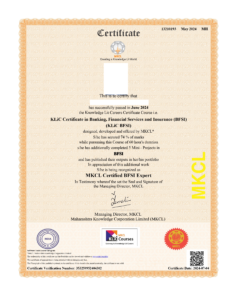Banking, Financial services & Insurance (BFSI)

The Indian banking system consists of 12 public sector banks, 21 private sector banks, 46 foreign banks, 43 regional rural banks and numerous urban cooperative as well as rural cooperative banks. Technological development has accelerated the use of mobile and internet banking services all over the nation. The banking sector is focused to make the most of this, by improving the customer’s user experience and be ahead of competition
- Introduction to Indian Financial system
- Introduction to Banking system with Digital banking
- General Principles of Investing
- Banking products & investment opportunities in banking sector
- Agricultural insurance, Life insurance, General insurance schemes for protection
- Risk and risk assessment in stocks/shares
- Mutual Funds and methods to invest
- Systematic Investment Plans (SIP)
- Financial analysis and credit rating of an individual
- Investment in Post Office schemes, Government bonds
- Microfinance
- Career in banking sector
- Career as a BFSI agent
- Necessary communication, networking and selling skills for career in BFSI sector
- Handling and resolving customer grievances
The academic approach of the courses focuses on the “work-centric” education i.e. begin with work (and not from a book!), derive knowledge from work and apply that knowledge to make the work more wholesome, useful and delightful. The ultimate objective is to empower the Learner to engage in socially useful and productive work. It aims at leading the learner to his/her rewarding career as an employee or entrepreneur as well as development of the community to which s/he belongs.


